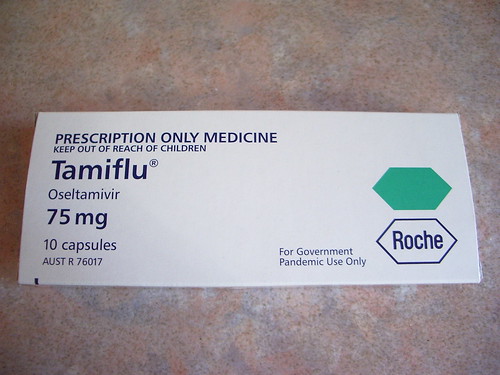 I am literally under house arrest with 2 small children to amuse who just want to go home and see their chickens. How to entertain them and myself? Make a completely edible molecular model of theobromine of course! My brother, aka Scon, told me about this site a while ago and said I should really check it out, especially the foodie bit. Like him, I am a bit far down on the geek scale...probably a bit more nerd than geek though, I dig the chemistry/biology more and get a bit lost with some of the IT, but hey, what a cool site! Anyway, enough rambling, here we go. This took place over 2 days as energy levels and compulsory rest (and vomit) breaks required!! Oh yeah, and in case you didn't know, theobromine is the active chemical in chocolate (higher in dark chocolate) that makes you feel good! If you are wondering where the "bromine" molecule is, you won't find it, it is named from the cacao plant Theobroma sp.
I am literally under house arrest with 2 small children to amuse who just want to go home and see their chickens. How to entertain them and myself? Make a completely edible molecular model of theobromine of course! My brother, aka Scon, told me about this site a while ago and said I should really check it out, especially the foodie bit. Like him, I am a bit far down on the geek scale...probably a bit more nerd than geek though, I dig the chemistry/biology more and get a bit lost with some of the IT, but hey, what a cool site! Anyway, enough rambling, here we go. This took place over 2 days as energy levels and compulsory rest (and vomit) breaks required!! Oh yeah, and in case you didn't know, theobromine is the active chemical in chocolate (higher in dark chocolate) that makes you feel good! If you are wondering where the "bromine" molecule is, you won't find it, it is named from the cacao plant Theobroma sp.Nana Glen Mum's Edible Molecular Model of Theobromine
PART 1 - CAKE
This recipe is from "cakepro" at Cake Central
Ingredients
2.5 Cups Flour
1.5 Cups Sugar
3 Tablespoons cocoa
0.5 teaspoon salt
1.25 teaspoon bicarb soda
1 Cup Butter
2 Eggs
1 ounce red food colouring (I omit this)
1 Cup Buttermilk (I just use normal full fat milk)
1 teaspoon Vanilla
Directions
Preheat oven to 180C.
Sift dry ingredients and set aside.
Beat butter and sugar in electric mixer until light and fluffy. Bet in eggs on at a time and add colouring (if you are using it). Add vanilla. Add half the flour, all the milk, then the rest of the flour, mixing as little as possible to combine.
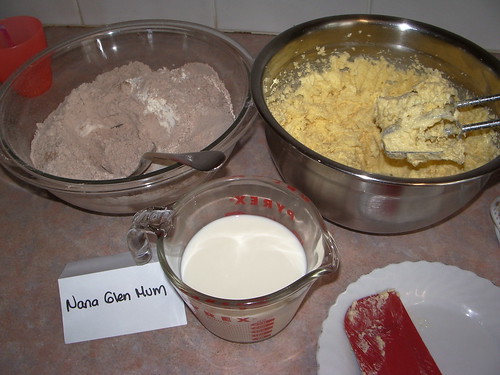
Pour the batter into 2 round pans (I just put it in one big rectangular one as it is going to get broken up anyway) and bake for 35-45 minutes (depending on the size of the pan). Cool in pan for 10 minutes then turn out onto a cooling rack.
Let it cool
Now for the fun part, get those hands in there and gently break it up into lots and lots of little crumbs!! Put it aside and make the frosting.
PART 2 - FROSTING
This recipe is from "Carol" at Cake Central
Ingredients
225g Cream Cheese, softened
56g Butter, softened
1 Tablespoons lemon juice (I used lime)
1 Teaspoon vanilla
5 Cups Icing Sugar Mixture (not pure icing sugar - it will set too hard)
Directions
Beat cream cheese, butter, lemon juice and vanilla together until smooth and fluffy. Add sugar in 2 batches.
PART 3 - SHAPING
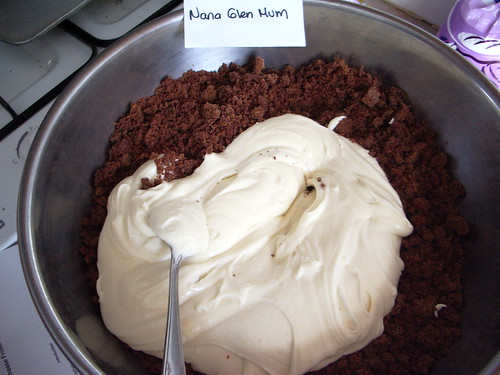 Gently fold the frosting into the cake crumbs. YUMMY! Be sure to taste it at this stage (no reason - just cause it tastes good!!) Shape the mixture into balls and place onto a tray lined with baking paper. I made my balls in 4 different sizes to represent the 4 atoms that make up the molecule.
Gently fold the frosting into the cake crumbs. YUMMY! Be sure to taste it at this stage (no reason - just cause it tastes good!!) Shape the mixture into balls and place onto a tray lined with baking paper. I made my balls in 4 different sizes to represent the 4 atoms that make up the molecule.PART 4 - COATING Ordinarily when I make cake pops (and all credit here goes to Bakerella for the COOLEST cake pops ever!!) I just coat them in melted chocolate, which I did for the smallest balls (Hydrogen). They were nice and easy. I just melted some white chocolate over simmering water, dropped them in and scooped them out and left them on a tray to cool and set. For the rest, I wanted colour, and as I am housebound at the moment, I had to make-do with what I could find in Mum's pantry, so sugar and food colouring to the rescue! I made up some toffee and coloured it with your regular supermarket food colourings. Here's how:
Ingredients
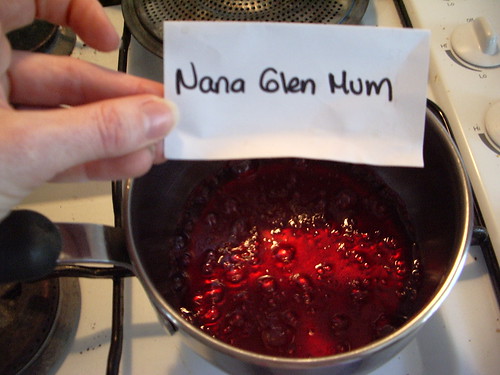
0.25 Cups Sugar
1 Cup Water
1 teaspoon Glucose
Food Colouring or cocoa
Directions
Place water, sugar and glucose in a small, heavy based saucepan and stir until ALL the sugar has dissolved. Bring it to the boil and STOP STIRRING immediately! With a pastry brush dipped in water, brush any crystals off the inside of the pan. Boil for 20 minutes until a spoonful of toffee dropped in a glass of cold water makes a "crack" sound and forms a hard ball. Take it off the heat and add a few drops of colouring or 2 teaspoons of cocoa. Carefully drop one ball in at a time, turning it over with a fork to evenly coat, then drain the excess toffee from it and place the coated ball on a lined tray to cool and set.
PART 5 - ASSEMBLY
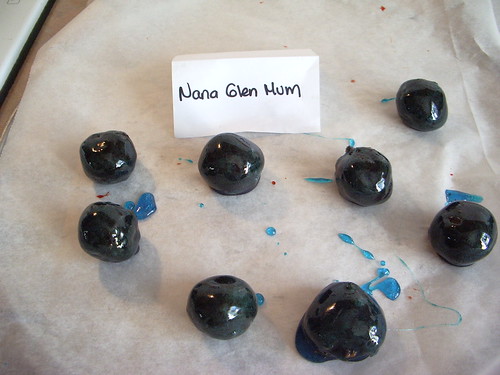
Now for the fun part! Grab a heap of toothpicks, a metal skewer, a candle, a box of matches, tray and either baking paper or a silicon mat. Because the toffee dries hard, there is no way you can push a toothpick in without shattering it...ask me how I know!! So, you light the candle with the matches and hold the metal skewer in the flame for a few seconds then push it through the toffee shell into the cake centre, wiggle it around a bit, take it out and you have a hole just the right size to poke your toothpick in! Yippee it works! Assemble molecule as desired. So folks, after much ado, here it is, my edible molecular model of theobromine. A cooking and chemistry lesson all in one for the kids (pity they are only 4 and 6 - I think the science was a bit lost on them - but they loved the taste!!) In case you are wondering, the small white chocolate balls are the Hydrogen, the blue ones are Nitrogen, the red are Oxygen and the black (cocoa) ones are Carbon.

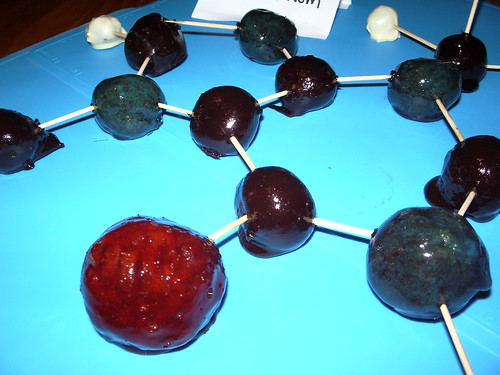
No comments:
Post a Comment